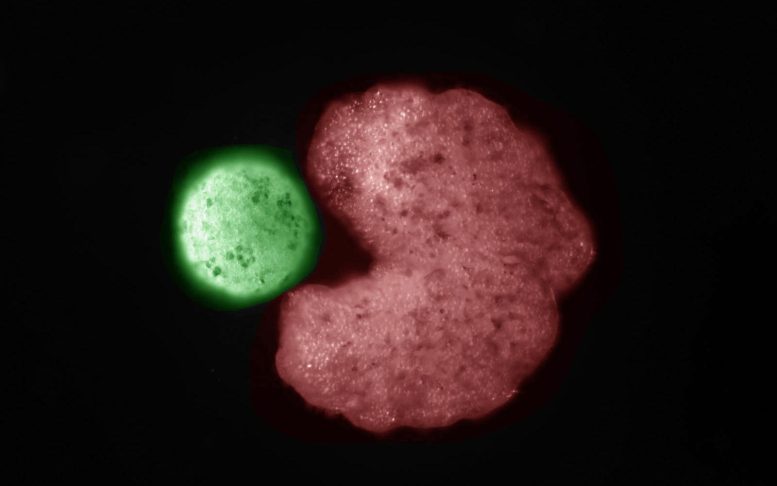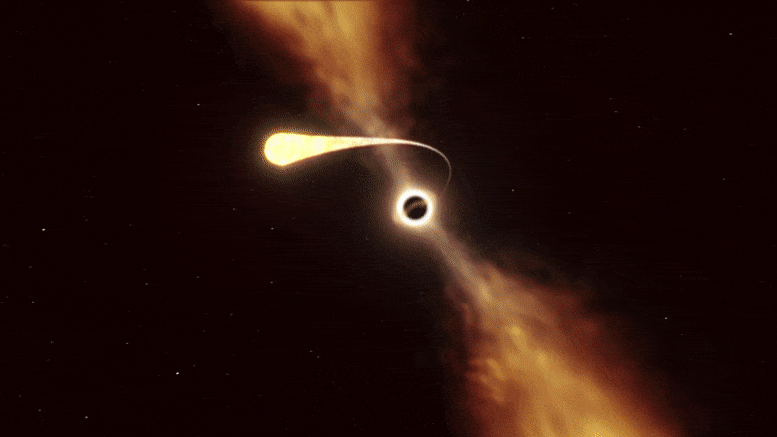Stanford’s Simple New Quantum Computer Design: Photonic Computation in a Synthetic Time Dimension

A relatively simple quantum computer design that uses a single atom to manipulate photons could be constructed with currently available components.
By STANFORD UNIVERSITY NOVEMBER 30, 2021

A relatively simple quantum computer design that uses a single atom to manipulate photons could be constructed with currently available components.
By UNIVERSITY OF MARYLAND NOVEMBER 30, 2021
By UNIVERSITY OF VERMONT NOVEMBER 30, 2021

An AI-designed “parent” organism (C shape; red) beside stem cells that have been compressed into a ball (“offspring”; green). Credit: Douglas Blackiston and Sam Kriegman
AI-designed Xenobots reveal entirely new form of biological self-replication—promising for regenerative medicine.
To persist, life must reproduce. Over billions of years, organisms have evolved many ways of replicating, from budding plants to sexual animals to invading viruses.
Now scientists have discovered an entirely new form of biological reproduction — and applied their discovery to create the first-ever, self-replicating living robots.
By UNIVERSITY OF LEICESTER NOVEMBER 29, 2021
By THE CONVERSATION NOVEMBER 29, 2021
By JEANETTE KAZMIERCZAK, NASA'S GODDARD SPACE FLIGHT CENTER NOVEMBER 28, 2021

This animation depicts a star experiencing spaghettification as it’s sucked in by a supermassive black hole during a ‘tidal disruption event’. Credit: ESO/M. Kornmesser
Watch as eight stars skirt a black hole 1 million times the mass of the Sun in these supercomputer simulations. As they approach, all are stretched and deformed by the black hole’s gravity. Some are completely pulled apart into a long stream of gas, a cataclysmic phenomenon called a tidal disruption event. Others are only partially disrupted, retaining some of their mass and returning to their normal shapes after their horrific encounters.
By NASA NOVEMBER 28, 2021

Is NASA aware of any Earth-threatening asteroids? Luckily there are no known asteroid threats to Earth for at least 100 years. But that doesn’t mean we’re not looking. Asteroid expert Davide Farnocchia of NASA’s Jet Propulsion Laboratory breaks it down:
By LORI DAJOSE, CALTECH NOVEMBER 27, 2021
By UNIVERSITY OF CALIFORNIA - IRVINE NOVEMBER 27, 2021

By NASA NOVEMBER 26, 2021
By UNIVERSITY OF COLOGNE NOVEMBER 26, 2021
By UNIVERSITY OF BRISTOL NOVEMBER 26, 2021

By CARNEGIE INSTITUTION FOR SCIENCE NOVEMBER 25, 2021
By UNIVERSITY OF SYDNEY NOVEMBER 24, 2021